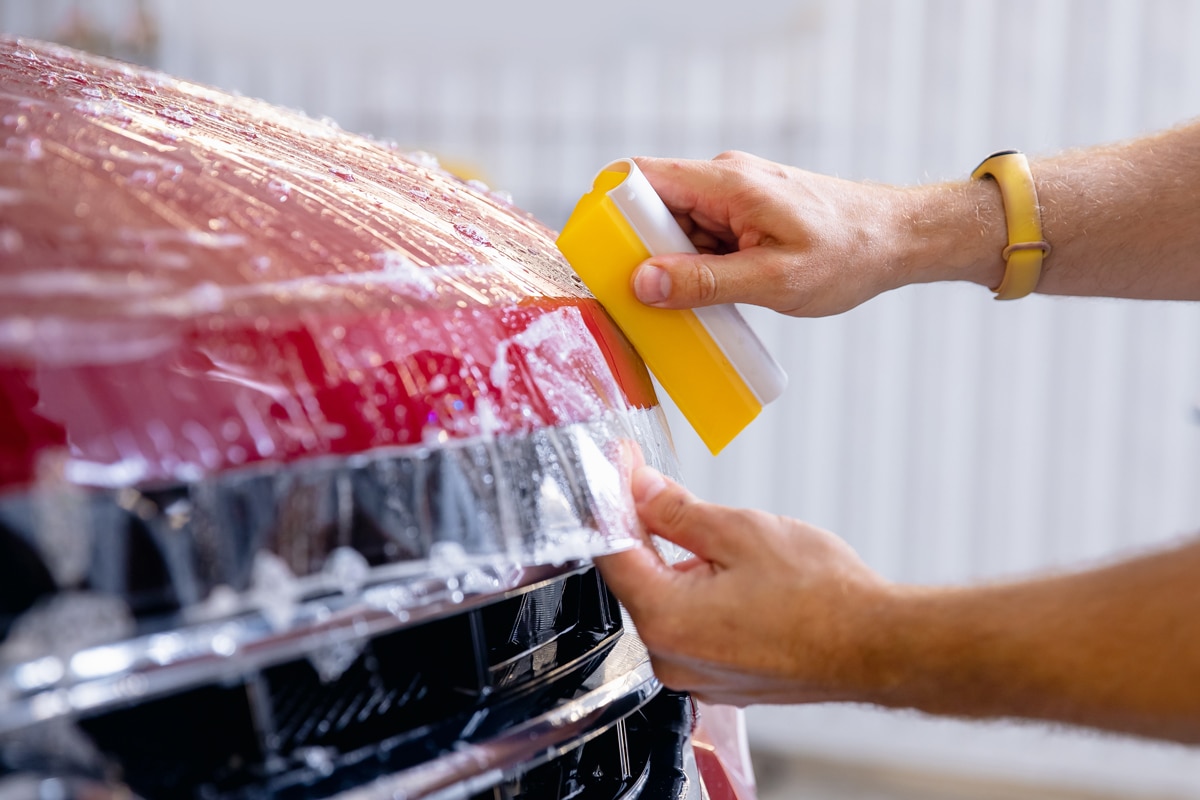What Is Paint Protection Film? Do I Need It for My Car?
Paint protection film can be a worthwhile addition to keep a car's finish looking brand new.
 Shutterstock
Shutterstock
Paint protection film (PPF) can be a worthwhile addition to help protect a car's finish to keep it looking brand new. Think of it as a transparent extra layer between the elements and a car's shiny paint job.
Given its hefty application cost, it may not make sense for every driver or every car, however.
Let's have a look at what makes PPF appealing for some cars, but potentially not worth the cost for others.
What Is Paint Protection Film?
PPF is a thin, typically clear, adhesive-backed layer that an expert can apply to certain body panels or even an entire vehicle. While PPF has been around for decades, the latest, most advanced films may last for a long time even under extreme light conditions, and they can heal themselves after light scratches.
Forget what you may have heard about older PPF, which typically cracked, yellowed, or both after a few years in bright climates. This was especially prevalent in cars that spent time in sunny western states, where rock chips and paint fade are more prevalent—just the kind of places where PPF should be the most useful.
A high-quality, modern PPF, can be backed by an extensive warranty against fading and cracking.
Why Would I Want Paint Protection Film?
PPF does just what its name says—it can protect your car's appearance. Film applied to the front end of a car or its rocker panels can deflect errant rocks, preventing them from chipping paint, which leads to exposed metal that could rust. A full application on a vehicle can resist damage from bird droppings or tree sap, and it can slow paint fade from sun exposure.
New-car factories apply paint in a consistent, high-quality fashion that's difficult (and costly) to replicate from a body shop. Over time, even protected paint may fade slightly, making it difficult for body shops to properly match aged paint should a single panel—such as a hood or front bumper—need to be refinished to correct rock chips.
All that means that you may find value in protecting your car's paint finish with PPF.
Applying PPF is especially common in areas where stone chips are the norm, such as in dry western states such as Arizona or Colorado, as well as rural areas with many unpaved roads.
Paint protection is more commonly applied to new (or relatively new) vehicles or to high-end collector cars, though some used car owners may opt for it. It tends to make less financial sense on an older used car due to the application cost.
What Costs Are Associated With Paint Protection Film?
Simply put, PPF is expensive. Installation costs vary by region and film quality, but a full application of high-end PPF to every panel of a larger SUV can top $7,000.
That's why you might choose to protect select panels, such as front bumpers and fenders, hoods, and rearview mirrors. These panels are by far the most likely to incur stone chips, especially on cars that spend a lot of time at highway speeds. Such applications can run as little as $800 for a small vehicle.
While car dealers commonly offer PPF, some automakers offer partial protection from the factory.
What Should I Consider When Shopping for PPF?
You'll want to do a little math to decide if the cost of adding PPF to a vehicle is worthwhile. Looking strictly at numbers, if it costs $2,000 to have the front end of a car protected, but the car is only worth around $10,000, that may be a tough sell. On the other hand, investing $2,000 in PPF on a costlier vehicle, such as a high-end sports car worth $100,000, could be more worthwhile.
Once you've decided if PPF is for you, it's important to find out the manufacturer and grade of PPF you plan to have applied to your vehicle. Llumar, Xpel, and 3M are three of the largest PPF manufacturers, and each has various grades of film. A more expensive film is likely to provide better self-healing properties, too.
Brand-name PPF may be backed by a warranty, often as extensive as 10-year protection against cracking and fading. As with any warranty, the fine print stipulates certain requirements, including fitment by an authorized installer. If a new-car dealer installs it, be sure to get a copy of the warranty for your records.
Additionally, an installer can typically provide its own guarantee against installation flaws, such as small air bubbles that are both unsightly and potentially trap moisture against your paint.
Fitment of PPF is a relatively labor-intensive process best left to a trained professional. Bigger shops may have a machine that cuts the film to size based on measurements taken by the PPF manufacturer. Installation requires a dust-free environment and considerable preparation, so it can take an installer more than a day to cover every panel on a large vehicle.
Written by humans.
Edited by humans.
 Andrew Ganz
Andrew GanzAndrew Ganz has had cars in his blood ever since he gnawed the paint off of a diecast model as a toddler. After growing up in Dallas, Texas, he earned a journalism degree, worked in public relations for two manufacturers, and served as an editor for a luxury-lifestyle print publication and several well-known automotive websites. In his free time, Andrew loves exploring the Rocky Mountains' best back roads—when he’s not browsing ads for his next car purchase.
Related articles
View more related articles